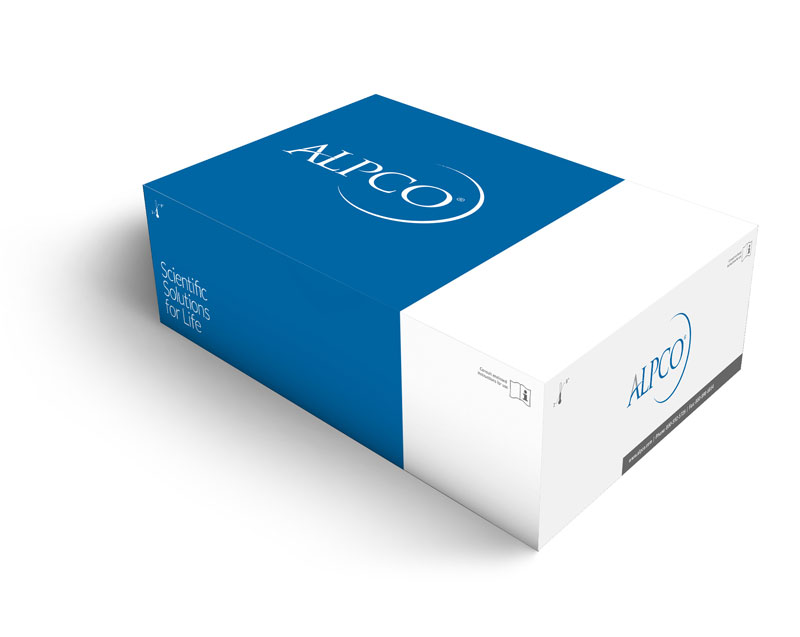Tips & Tricks
The Enzyme-Linked Immunosorbent Assay (ELISA) is a proven sensitive method for detecting and quantifying specific biomarkers in a wide range of clinical and research samples. The accuracy and precision of ELISAs can be affected by many factors, including pipetting, washing, and sample-handling techn...
Responsibility
ALPCO’s Diabetes Research Travel GrantALPCO strives to provide scientists and healthcare professionals with robust tools for their research and clinical diagnostic endeavors. We understand that championing extraordinary discoveries requires extraordinary efforts, and support. We are proud to continu...
PRIVACY POLICY
This privacy policy discloses the privacy practices for alpco.com. This privacy policy applies solely to information collected by this website. It will notify you of the following:
What personally identifiable information is collected from you through the website, how it is used and with whom it ...
TERMS AND CONDITIONS
These Website Standard Terms and Conditions (these “Terms” or these “Website Standard Terms and Conditions”) contained herein on this webpage, shall govern your use of this website, including all pages within this website (collectively referred to herein below as this “Website”). These Terms apply i...
Toxicology
Drug-Induced Organ Injury
Toxicological side effects are a common obstacle in drug development pipelines and often manifest in site-specific damage to vital organs, including the liver, kidney and heart. Estimates of compound attrition from failure to meet safety endpoints are as high as 45% in pre...
How Should We Define Vitamin D Deficiency?
Date: July 21, 2015
Author: Bethany Bell, PhD; Senior Product Manager at ALPCO
Dr. Anders Berg presented at the Northeast Laboratory Conference in October 2014 regarding a much debated topic: vitamin D deficiency and how this should be defined. Dr. Berg referenced over one thousand studies, re...
BTK Inhibitors as Cancer Drug Treatments
Date: July 26, 2016
Author: Andrea Tarbet, Product Marketing Associate at ALPCO
Over the past several years, the drug arsenal to combat B cell cancers has gained a mighty weapon: Bruton’s tyrosine kinase (BTK) inhibitors. The origins of using BTK inhibitors as cancer drug treatments actually b...
Dorothy Hodgkin’s Discovery of Insulin's 3D Structure
Nobel Prize winning British chemist Dr. Dorothy Hodgkin significantly contributed to unraveling the secrets of diabetes mellitus. She is considered a founder of X-ray crystallography, a technique used to discern the structures of organic biomolecules. Dorothy Hodgkin’s discovery of insulin's 3D...
An Accurate Solution to the Challenges with Measuring GLP-1
Glucagon-like peptide-1 (GLP-1) is a gut hormone which plays an essential role in insulin secretion and glucose homeostasis1. While GLP-1 has become central to many metabolic disease research programs, various GLP-1 ELISA kits currently available on the market have been failing to meet the needs of ...
How DPP-4 Complicates Measuring GLP-1 Accurately
We know that the proper collection and handling of samples is vital for eliminating analytical variability and improving accuracy when measuring active GLP-1 (7-36) amide.
ALPCO is here to help your lab reduce technical errors and improve assay results when running the STELLUX® Chemi Active GLP-1...
How to Properly Collect and Handle GLP-1 Samples
We know that the proper collection and handling of samples is vital for accurately measuring GLP-1.
ALPCO is here to help your lab reduce technical errors and improve assay results when running the STELLUX® Chemi Active GLP-1 (7-36) amide ELISA.
Watch our video to learn how to properly collect...
A Guide to STELLUX® Chemiluminscence ELISAs: An Infographic
Today, multiple immunoassay platforms exist, providing scientists and clinicians with the means to measure a variety of biomarkers1,2,3. However, research indicates some immunoassay platforms have limitations that can inhibit progress in the laboratory4,5,6. In an effort to provide researchers with ...
A Comparison of Colorimetric and Chemiluminescence ELISAs
Are you curious about chemiluminescence ELISAs, but not exactly sure what they are, or how to use them? Our video A Comparison of Colorimetric and Chemiluminescence ELISAs discusses how similar these two types of assays are, and how they can enhance your lab testing.
Watch our video to:
Lear...
12 ELISA Tips and Tricks: An Expert’s Guide to Improve Your Technique
The Enzyme-Linked Immunosorbent Assay (ELISA) is a proven sensitive method for detecting and quantifying specific biomarkers in a wide range of clinical and research samples. The accuracy and precision of ELISAs can be affected by many factors, including pipetting, washing, and sample-handling techn...
ALPCO’s Winter 2021 Diabetes Research Travel Grant Recipient
Salem, NH, April 14, 2020
FOR IMMEDIATE RELEASE – Today ALPCO announced Xi Wang, a PhD candidate at Cornell University, as the latest recipient of its Diabetes Research Travel Grant.
Xi’s research focuses on the development of a transplantable encapsulation device for the safe delivery of func...
6 Tips for Improving Chemiluminescence ELISA Precision
Chemiluminescence ELISA technology offers enhanced sensitivity with a very broad dynamic range. However, consistency in assay technique is especially important to ensure optimal performance from day-to-day and operator-to-operator. The following six tips may help to improve intra-assay and inter-ass...
Understanding Exocrine Pancreatic Insufficiency
Pancreatic Elastase (PE) Testing for Determination of Exocrine Pancreatic Insufficiency (EPI)
Advantages of ALPCO PE Testing for Determination of EPI
• No interference from PERT
• Single sample collection without dietary restriction
• Detection of both CELA3A and CELA3B isoforms
• Compatibi...
Honoring Scientific Advancements in the Discovery of Insulin
Celebrate Insulin’s Discovery: Download the History of Insulin Timeline for Your Lab! The year 2021 marked the 100th anniversary of Banting, Best, and Macleod discovery of insulin. However, many other scientists also contributed to the foundational understanding of endocrinology that enabled one of ...
Life Science and Clinical Diagnostics Solutions
Product Portfolio: Over 600 Kits to Measure Important Biomarkers. We are continuously expanding our portfolio of life sciences and clinical diagnostic solutions in support of the research community. ALPCO currently offers over 600 kits to measure important biomarkers in multiple species and sample t...
ALPCO-GeneProof Appoints Erik M. Allen as Chief Executive Officer
SALEM, N.H. and BRNO, Czech Republic, March 30, 2023 /PRNewswire/ -- American Laboratory Products Company, Ltd. ("ALPCO", or the "Company"), a global provider of specialty diagnostic solutions, today announced the appointment of Erik M. Allen as Chief Executive Officer (CEO). Mr....
ALPCO's Superior Calprotectin Assay: Maximize Efficiency & Accuracy
Reduce False Positives from 26% to 7%! An increase in clinical specificity, and a decrease in false positives, enables clinicians to better evaluate IBD/IBS patients. Clinicians can schedule follow-up colonoscopies for the patients that need it most and start IBS patients on the right treatment path...
 Helicobacter Pylori Antigen Fecal Sample Collection Devices
Helicobacter Pylori Antigen Fecal Sample Collection Devices STELLUX® 4400 Chemiluminescence Plate Reader
STELLUX® 4400 Chemiluminescence Plate Reader Free Testosterone ELISA
Free Testosterone ELISA